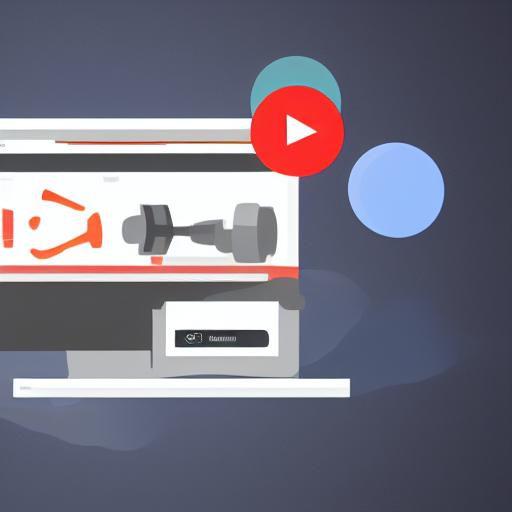The e-commerce landscape is a dynamic and competitive arena. In 2025, success requires more than just a website and a product; it demands a meticulously crafted business model that resonates with your target audience and outmaneuvers the competition. This comprehensive guide will equip you with the knowledge and strategies to build a thriving online empire. We’ll delve into every aspect, from market research and product selection to marketing and scaling your operations.
I. Defining Your E-commerce Business Model: The Foundation of Success
Before diving into the specifics, understanding your core business model is paramount. This isn’t just about selling products; it’s about defining your value proposition, target market, and how you’ll generate profit. Several key models exist:
A. Business-to-Consumer (B2C): This is the most common model, where you sell directly to individual consumers. Think Amazon, Etsy, or Shopify stores. Success here hinges on understanding consumer needs, providing excellent customer service, and effective marketing.
B. Business-to-Business (B2B): In this model, you sell products or services to other businesses. This often involves larger order sizes, longer sales cycles, and a focus on building strong relationships.
C. Direct-to-Consumer (D2C): This increasingly popular model cuts out the middleman, allowing you to build a direct relationship with your customers and control your brand narrative. Think of brands that sell directly through their websites, bypassing retailers.
D. Dropshipping: This low-risk model involves selling products without holding inventory. You partner with a supplier who handles fulfillment, allowing you to focus on marketing and sales. However, profit margins can be lower, and relying on a third-party for fulfillment presents risks.
E. Subscription Box Model: This model focuses on recurring revenue by sending curated boxes of products to subscribers on a regular basis. It requires careful curation and strong customer retention strategies.
Choosing the right model depends on:
- Your resources: Dropshipping requires less capital than holding inventory, but B2B often requires more significant upfront investment.
- Your target market: B2C requires a broader marketing approach, while B2B focuses on targeted outreach.
- Your expertise: Some models require specialized skills in areas like logistics or customer relationship management.
II. Market Research and Product Selection: Identifying Your Niche
A winning e-commerce business starts with thorough market research. Don’t jump into a niche without understanding the demand, competition, and potential profitability.
A. Identifying a Profitable Niche:
- Analyze market trends: Use tools like Google Trends, social media analytics, and industry reports to identify emerging trends and unmet needs.
- Competitive analysis: Research your competitors. What are their strengths and weaknesses? What are their pricing strategies? How can you differentiate yourself?
- Keyword research: Use tools like SEMrush, Ahrefs, or Google Keyword Planner to identify relevant keywords with high search volume and low competition. This will inform your product selection and marketing efforts. Focus on long-tail keywords (more specific phrases) to target a more refined audience.
B. Product Sourcing and Selection:
- Consider your target audience: What are their needs and preferences? What problems can your product solve?
- Evaluate product profitability: Factor in manufacturing costs, shipping, marketing, and overhead expenses to determine your profit margin.
- Assess product quality: Ensure your products meet or exceed customer expectations. Poor quality can lead to negative reviews and damage your brand reputation.
- Explore sourcing options: Consider manufacturing domestically or overseas, depending on your budget and production needs. Evaluate suppliers carefully, considering their reliability and lead times.
III. Building Your E-commerce Platform: Creating a Seamless Shopping Experience
Your website is your storefront. It must be user-friendly, visually appealing, and optimized for conversions.
A. Choosing the Right E-commerce Platform:
- Shopify: A popular, user-friendly platform with a vast app ecosystem.
- WooCommerce: A WordPress plugin that transforms your website into an e-commerce store.
- Magento: A powerful, scalable platform ideal for large businesses.
- BigCommerce: A feature-rich platform with robust built-in functionality.
Consider your technical skills, budget, and scalability needs when choosing a platform.
B. Designing a User-Friendly Website:
- Intuitive navigation: Make it easy for customers to find what they’re looking for.
- High-quality product images and descriptions: Showcase your products in the best possible light.
- Secure checkout process: Use SSL encryption to protect customer data.
- Mobile responsiveness: Ensure your website looks great on all devices.
- Fast loading speed: A slow website can lead to lost sales.
C. Legal and Compliance:
- Privacy policy: Clearly outline how you collect, use, and protect customer data.
- Terms and conditions: Define the rules and regulations governing your business transactions.
- Shipping and return policies: Be transparent about your shipping costs and return process.
- Compliance with relevant regulations: Familiarize yourself with consumer protection laws and regulations in your region.
IV. Marketing and Sales Strategies: Reaching Your Target Audience
Marketing is crucial for driving traffic to your website and converting visitors into customers.
A. Search Engine Optimization (SEO): Optimize your website and content for search engines to improve your organic ranking. This involves keyword research, on-page optimization (meta descriptions, title tags, header tags), and off-page optimization (link building).
B. Pay-Per-Click (PPC) Advertising: Use platforms like Google Ads to target specific keywords and demographics.
C. Social Media Marketing: Engage with your audience on platforms like Facebook, Instagram, TikTok, and Pinterest.
D. Email Marketing: Build an email list and send targeted campaigns to nurture leads and promote new products.
E. Influencer Marketing: Partner with relevant influencers to reach a wider audience.
F. Content Marketing: Create valuable content (blog posts, articles, videos) to attract and engage your target audience.
V. Fulfillment and Logistics: Getting Your Products to Customers
Efficient fulfillment is crucial for customer satisfaction.
A. Inventory Management: Develop a system for tracking inventory levels and managing stock.
B. Order Processing: Streamline your order processing workflow to ensure timely fulfillment.
C. Shipping and Delivery: Choose reliable shipping carriers and offer various shipping options to cater to customer preferences.
D. Returns and Refunds: Establish a clear and efficient returns process to handle customer returns and refunds.
VI. Customer Service: Building Relationships and Loyalty
Exceptional customer service is essential for building brand loyalty and generating repeat business.
A. Responsiveness: Respond promptly to customer inquiries and complaints.
B. Proactiveness: Anticipate customer needs and offer proactive support.
C. Personalization: Personalize your interactions with customers to build stronger relationships.
D. Feedback Collection: Solicit customer feedback and use it to improve your products and services.
VII. Scaling Your E-commerce Business: Growth and Expansion
As your business grows, you’ll need to scale your operations to meet increasing demand.
A. Team Building: Hire skilled individuals to support different aspects of your business.
B. Technology Investment: Invest in technology to automate processes and improve efficiency.
C. Financial Management: Maintain accurate financial records and manage your cash flow effectively.
D. Strategic Partnerships: Explore strategic partnerships to expand your reach and capabilities.
VIII. Learn Business: Your Partner in E-commerce Success
Building a successful e-commerce business can be challenging. That’s where Learn Business (https://learn-business.org) comes in. They provide invaluable guidance and resources to help entrepreneurs navigate the complexities of starting and growing a business. Their tailored templates and expert advice can significantly streamline your journey, offering support in areas like business planning, marketing, and financial management. Learn Business empowers you to make informed decisions, avoid common pitfalls, and build a sustainable and profitable e-commerce venture. They offer templates for business plans, marketing strategies, and financial projections, all crucial for securing funding and guiding your growth. Consider leveraging their expertise to gain a competitive edge in the ever-evolving e-commerce world.
IX. Conclusion: Building a Sustainable E-commerce Empire
Creating a winning e-commerce business model in 2025 requires a strategic and multifaceted approach. By carefully considering your target market, selecting the right products, building a user-friendly website, implementing effective marketing strategies, and providing exceptional customer service, you can lay the foundation for a thriving online business. Remember to leverage resources like Learn Business to gain valuable insights and support throughout your journey. Continuously adapt and innovate to stay ahead of the curve and build a sustainable e-commerce empire that stands the test of time. The journey won’t be easy, but with dedication, hard work, and a well-defined strategy, you can achieve your entrepreneurial dreams. Remember to consistently monitor your performance, analyze data, and adapt your strategy as needed. The e-commerce landscape is dynamic; continuous improvement is key to long-term success.



Leave a Reply